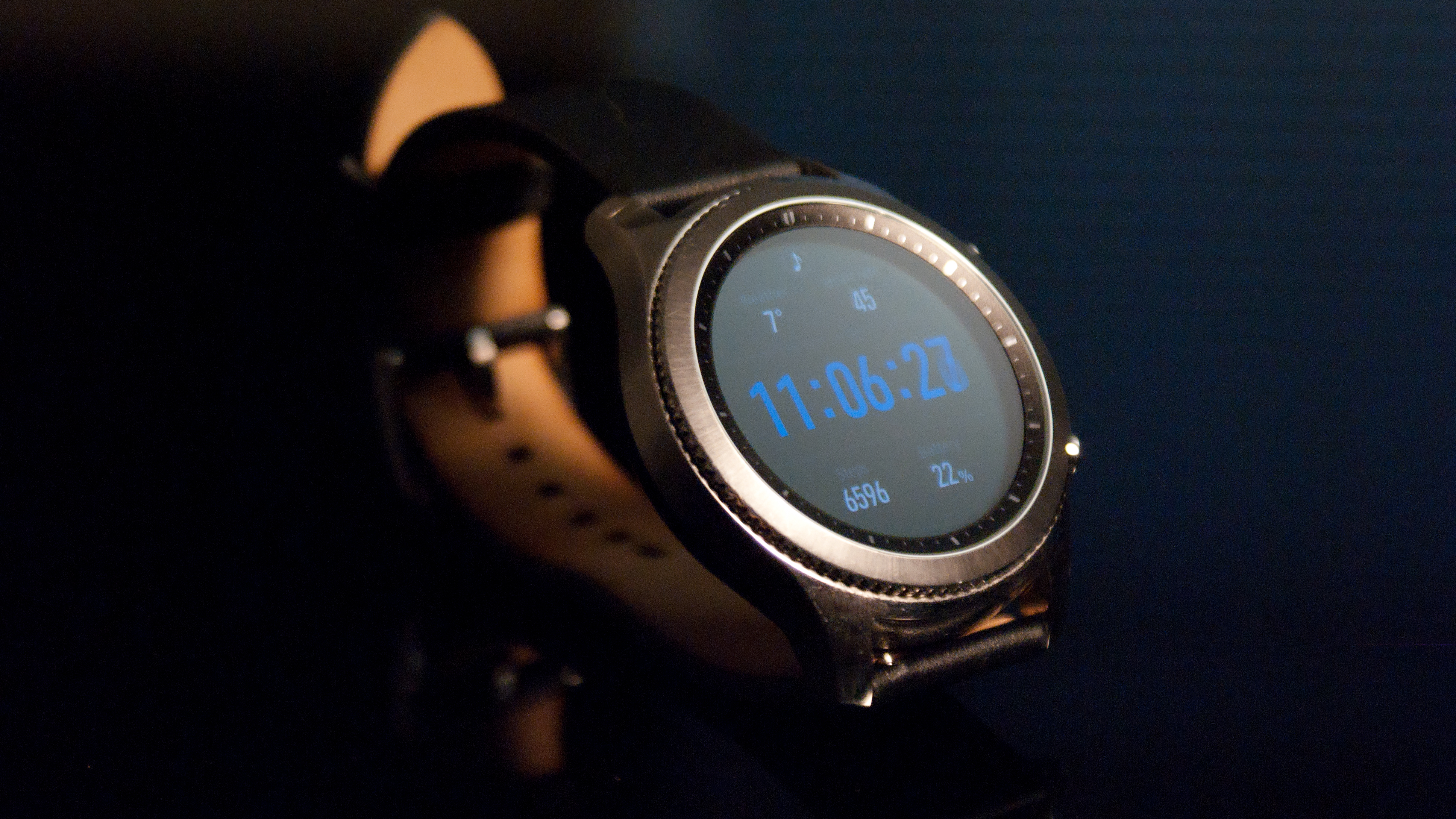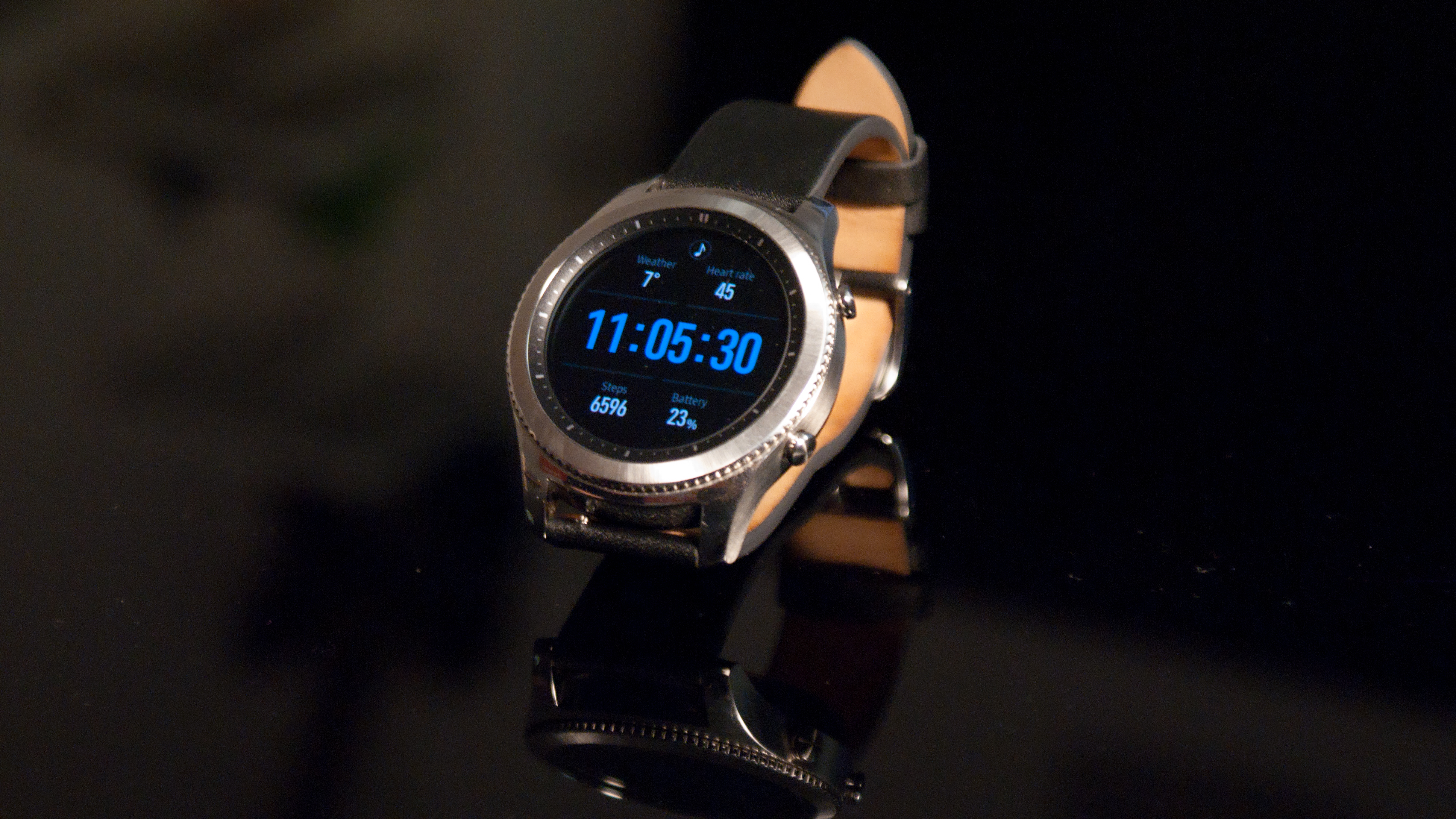Why you can trust TechRadar
The main thing to note about the Samsung Gear S3 is just how few apps it has on board. It's an odd situation where one of the world's biggest manufacturers can't seem to keep the biggest brands on board.
There are some apps starting to filter through. Spotify brought offline playlist syncing to the Gear S3 (and S2, while we're here) which means you can finally leave the phone at home when going out running with tunes.
But some apps are still confusing. such as Nike+ running. This was a big feature when the Gear S2 was launched in 2015, with a strong fitness angle and this dedicated app to connect you with your running buddies and remove the need to spend a lot of cash on a great new running watch.
There is an alternative for runners in Pear, a free app that offers audio coaching, heart rate tracking, distance, pace and calories. But this is still a big gap in the S3's portfolio.

But that app suddenly disappeared with the Gear S2, and has shown no signs of popping up again now the new-and-improved model is out on shop floors. In fact, apart from its own apps and a few random games, the Samsung Gear S3 is comparatively understocked.
New apps have filtered through. For example, Under Armour's food-tracking MyFitnessPal and Under Armour Record are now onboard for offline GPS tracking, as are Nest smarthome and Uber.
It’s odd for such a big brand to lack an app ecosystem, but presumably because the S3 runs Tizen, Samsung’s own operating system, developers need to re-code their own apps just to support another kind of device.
Not only that, but to download these apps you have to head to Samsung’s own app portal, rather than being able nab them from the Google Play Store. So there are some considerable barriers here.

With Wear OS (previously Android Wear) devices, if you download an app that’s got an watch-compatible app embedded it will automatically install on your smartwatch as well. With Samsung, you’ll need to download that app from its own portal - which is less well-stocked and harder to navigate.
It just shows how dependent Samsung really is on Google - the South Korean brand could never use its Tizen operating system on phones instead of Android, as there would be so few apps available that the Galaxy range would wither and die like Windows Phone devices.
Connections
Samsung does know how to get its technical options right, and that’s exemplified in the way the Gear S3 manages to seamlessly jump between Wi-Fi and Bluetooth to stay connected and provide information to your wrist.
While some apps won't work without the phone (WhatsApp, for instance) most of the information coming in can draw updates from your Wi-Fi connection. What's great is this doesn't need to be set up manually, with the Gear S3 taking the data from your phone and connecting to your home Wi-Fi automatically.
It's not flawless - it seems that the S3 can take a while to work out if there’s a connection when you use the watch in new places - but on the whole the new Gear smartwatch seems to know where it is pretty well.
The issue comes when the watch randomly loses connection. You can be sitting there, phone in pocket and watch on the wrist, and go to change the music on your wrist - only to find the Gear S3 is in 'connected remotely' mode, meaning you're getting information from Wi-Fi and not from the phone.
The only way to solve this is to go into your Bluetooth menu and force them to talk to each other again, like some sort of electronic marriage counsellor. It'll link back up pretty quickly, but it's another rough edge for a high-end device.

The music playback is one of the top features of the Samsung Gear S3, for a number of reasons. Firstly, it's a seamless experience - if you're streaming music on your phone, you'll be able to switch tracks and see what's playing, with album art in the background, without a problem. The bezel rotation flicks through tracks (although we wish it was volume) and it's all rather seamless.
If you've transferred MP3s to the device (which has 4GB built in) you can listen to music from the watch itself, either streaming over Bluetooth audio or the internal speaker, which is surprisingly loud for such a small device. It's never going to replace a proper speaker, and it's rather tinny, but it's not a bad experience.
Transferring music (and other media, like photos) is a really seamless experience, and kudos to Samsung for making it so simple from the app. We just wish Spotify would work in the same way so we could ditch the phone at times.
The bezel interaction is one of the better things about this watch, in theory. We add this caveat as it's a smooth way to interact with the device, a circular slide through menus and options.
It's a little on the stiff side though, so you can't move with a single digit easily, and that feels a little irritating. But on the whole it's a nice way to slide through the interface (although it's rather easy to slide right past the option you were looking for).
The variety of watch faces on offer is already far greater than Apple's, and the quality seems rather high too - so that's a great way to customise the watch as you want. However, we're still waiting for some truly awesome options to appear and make this into a sleeker device.
Current page: What's it like to use?
Prev Page Introduction and design Next Page Running, fitness and battery
Gareth has been part of the consumer technology world in a career spanning three decades. He started life as a staff writer on the fledgling TechRadar, and has grew with the site (primarily as phones, tablets and wearables editor) until becoming Global Editor in Chief in 2018. Gareth has written over 4,000 articles for TechRadar, has contributed expert insight to a number of other publications, chaired panels on zeitgeist technologies, presented at the Gadget Show Live as well as representing the brand on TV and radio for multiple channels including Sky, BBC, ITV and Al-Jazeera. Passionate about fitness, he can bore anyone rigid about stress management, sleep tracking, heart rate variance as well as bemoaning something about the latest iPhone, Galaxy or OLED TV.
